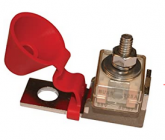dudeinak
Less talk, more fish!
- Joined
- Feb 11, 2020
- Messages
- 9
This may be outside of the purview of this forum, but am hoping to enlist the knowledge contained herein to help my with my project. This is a boat project, so theres that. I have two batteries that need to be separated into a start and house battery isolated from each other, yet charged from same alternator. Would like to add a solar panel in near future for battery charge maintenance when on overnite trips
My confusion is in the design. What components are best, where and how many fuses to include, and what device to use for charging both batteries while maintaining isolation. Thanks for the forum.
My confusion is in the design. What components are best, where and how many fuses to include, and what device to use for charging both batteries while maintaining isolation. Thanks for the forum.




